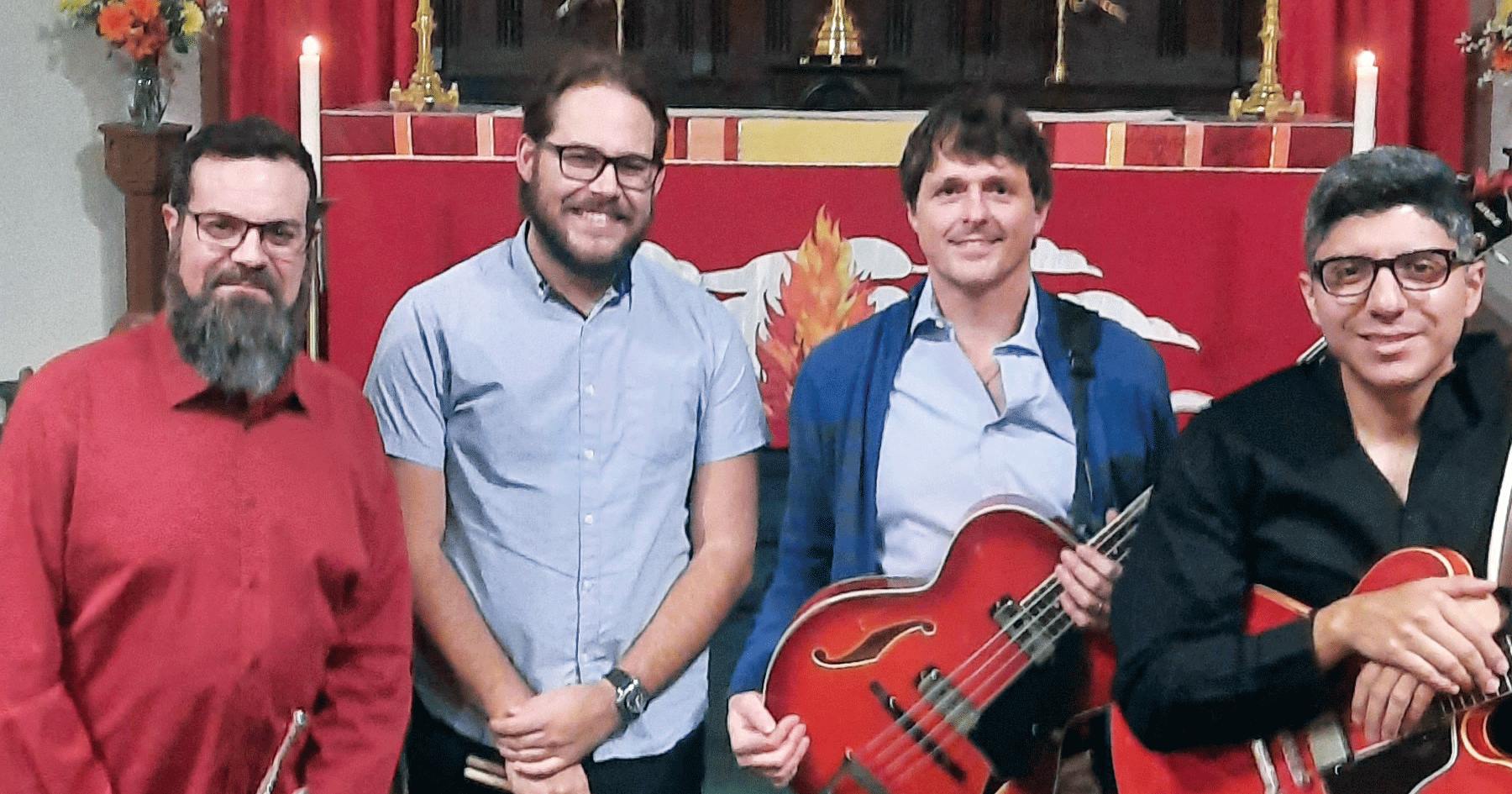Prior to the COVID shutdowns, All Saints hosted three services each Sunday: a small, quiet BCP service at 7:45 am, a contemporary, band-supported service at 9:15 am, and a traditional choir-supported service at 11:00 am. When I last wrote about our program in 2020 my reflections were focused on the joys and challenges of the contemporary music program at our 9:15 service. Since the return to in-person worship, however, the more interesting story at All Saints has to do not with the band but with our choral program.
All Saints did not escape the devastating impact of the COVID shutdowns on church attendance: in the fall of 2019 we had averaged about 169 people every Sunday across all three services combined, whereas in the fall of 2024 we have grown back only to an average of 96 in-person attendees, plus 30-ish online viewers. These numbers cannot support multiple services on a Sunday, so the varied musical and liturgical traditions from our two main pre-COVID services have all had to find a home in a single combined service. For some the mixed approach simply does not evoke a worshipful feeling the way their preferred service once did, so it has been a challenge.
Compounding this challenge, in 2022 our choir had become diminished and our co-directors had both retired. This put All Saints in the unusual position of having more robust contemporary music resources than traditional resources when it was time to resume regular in-person worship. With the band in good shape, and our unwillingness to abandon choral worship entirely, the pressing question was how best to rejuvenate the choral program.
In the end I was encouraged by our church council to attempt the bold, but risky and controversial strategy of disbanding the prepandemic choral program and creating a new program from scratch. Rather than a typical approach that welcomed all willing singers from the congregation, this new program would be oriented toward challenging classical music, and would reach out beyond the congregation for experienced choristers. Having found a highly qualified local conductor willing to take on a church gig we canvassed the congregation and the wider community, held auditions, and selected a group of about 16 choristers, of whom about a quarter were parishioners. The commitment level was one service per month from September through May, plus Lessons and Carols.
This program is now in its second year and I think it is going well, though it has had a few bumps along the way and still has some detractors. A common argument here is that participatory music is good but performative music is bad. While I agree that ego has no place in worship, I cannot escape my biases in this discussion because for me listening to great music can be a highly participatory form of prayer, while participating in poor music can sometimes be more painful than prayerful. There are no right or wrong answers here, it’s just the old tension between excellence and inclusion: there are simply different advantages and disadvantages depending on where you land in that tension. For my part I am glad that All Saints was willing to at least attempt an excellence-based model, because we are one of the few churches that even has that option due to our available resources and community connections. I’d rather that we had tried it and been proven wrong than failed to try it at all.
Meanwhile our band “Cross and Crown”, currently providing music for the majority of our services, continues much as it has since its inception in 2009. Our repertoire was largely established prior to the pandemic, with some of our favourite pieces now preserved on YouTube. Since then we have continued to add the occasional piece of new music, often from a project called “the Porter’s Gate” (also on YouTube).
Finally, in cooperation with the local jazz community All Saints hosted its first jazz vespers service in October of 2024, with the expectation of more to come in 2025.


